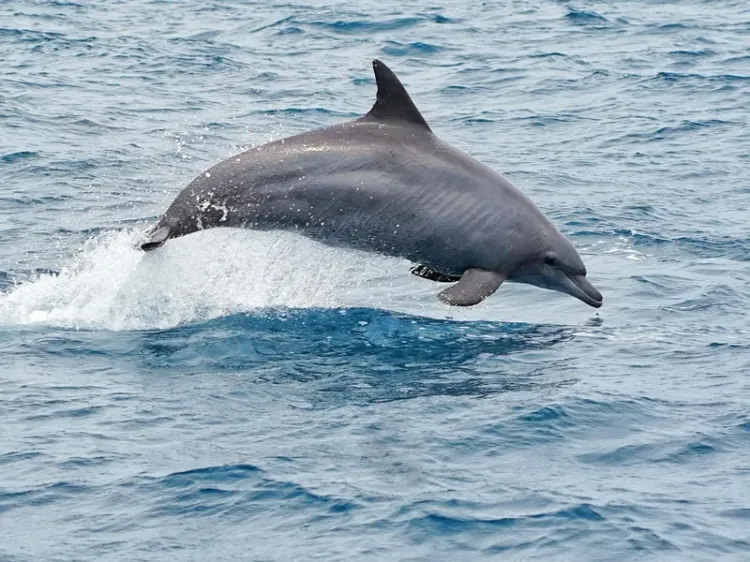Is Acoustic Technology Poised to Revolutionize Marine Mammal Research in India?

Synopsis
Key Takeaways
- Acoustic technology is revolutionizing marine mammal research in India.
- Continuous monitoring is possible with Passive Acoustic Monitoring (PAM).
- Research can help assess species abundance and migration routes.
- A National Plan of Action for Marine Mammal Conservation is crucial.
- AI and ML can refine data accuracy.
Kochi, November 6 (NationPress) Monitoring whales, dolphins, and other marine mammals through sound-based technologies could signify a significant advancement in India’s ocean research and conservation initiatives.
During a dedicated session on marine mammal research at the fourth International Symposium on Marine Ecosystems (MECOS 4) at ICAR-Central Marine Fisheries Research Institute (CMFRI), experts highlighted the transformative potential of Passive Acoustic Monitoring (PAM) for marine science in India.
Since sound travels much more quickly and farther underwater than light, acoustic technology serves as an effective means for detecting and studying marine life, even in challenging deep or murky waters.
In contrast to traditional visual surveys that rely on clear weather and daylight, PAM allows for continuous monitoring around the clock across vast ocean territories.
"Various systems such as bottom-mounted moorings, surface and drifting buoys, towed arrays, and acoustic tags attached to individual animals can capture the sounds made by marine mammals," stated Dr. Divya Panicker from Ashoka University.
"By examining these sound patterns, researchers can determine species, estimate populations, and even trace migration paths and behavioral patterns."
She further noted that the integration of Artificial Intelligence (AI) and Machine Learning (ML) technologies could enhance species identification and improve data precision.
With India’s extensive coastline and rich marine biodiversity, experts emphasized that developing indigenous acoustic systems could significantly impact marine conservation efforts.
The session also advocated for a National Plan of Action for Marine Mammal Conservation to address various threats, including habitat loss, underwater noise, pollution, vessel collisions, and fishing net entanglement, all of which are contributing to the decline in populations of whales, dolphins, and dugongs.
Importantly, CMFRI’s recent research on marine mammals has already aided India in overcoming a key regulatory hurdle in seafood exports to the United States, showcasing the broader policy implications of these scientific advancements.
Dr. A. Bijukumar, Vice-Chancellor of Kerala University of Fisheries and Ocean Studies (KUFOS), called for the establishment of a national multi-institutional marine mammal network to streamline research and conservation efforts.
CMFRI Director Dr. Grinson George stressed the necessity of a well-funded, coordinated strategy involving research institutions, enforcement agencies, and coastal communities, advocating for trained marine scientists to assist with stranded animals and conduct autopsies to determine causes of death.









